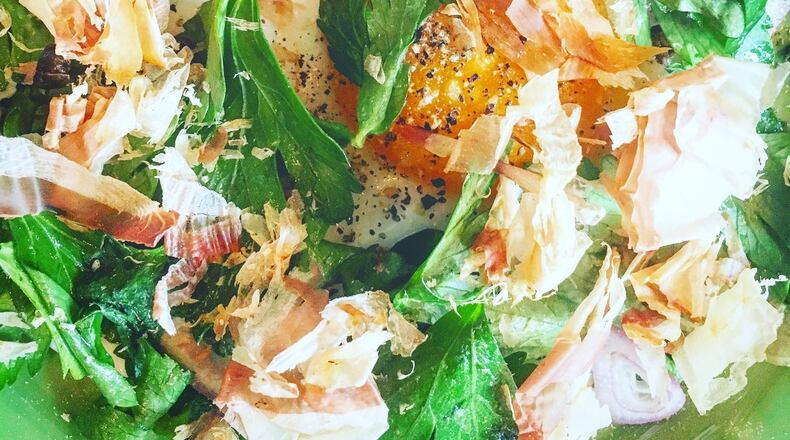The Lilburn Farmers Market opened for its eighth season on June 2 with vendors offering “a little bit of everything,” says market manager Mandy McManus. “We’ll have eight to 10 farmers every week, and that means a third of our vendors are bringing produce. We also have meat, honey, eggs, coffee, jelly, salsa, bread and more.”
McManus is not only the manager, she’s one of the vendors, selling 4- and 8-inch pots of culinary herbs as well as dried herbs and seasoning mixes, under the umbrella of her 22-year-old business, McManus Greenhouse. “We have plenty of starter plants of basil, thyme, oregano, rosemary, mint, all the usual herbs. Plus parsley.”
She says the great thing about parsley is that it’s easy to grow. The toughest thing is getting the seeds to sprout. “Germination can take more than 20 days, and that’s so long that most people think they did something wrong.” So she recommends starting with plants instead.
“It’s a biennial, so it grows big and bushy the first year. You can cut all you want. In the second year, its focus is putting out seeds, so you use it up early in the season before it flowers and goes to seed. The plant will die after that. I tell my customers to treat it as an annual if they’re going to cook with it. But if they have room, they should leave it in for that second year because it’s a host plant for the black swallowtail butterfly. It’s a favorite food of their caterpillars. I let a lot of my parsley go to seed because I like to do all I can to help the butterflies.”
She suggests parsley is a great plant for container gardens. Since it has a long taproot, it needs a pot with some depth to it, but that long taproot means the parsley is less likely to wilt in hot weather. Her suggestion for harvesting the leaves is to just cut off stems from the outside, leaving the center to keep growing and producing more stems.
One of the things she likes about parsley is that it’s good for you. “It’s one of the healthiest herbs with tons of vitamins, including three times the amount of vitamin C you’d get from an orange.”
McManus finds many ways to use parsley. She likes adding it to fresh salads and all kinds of summer produce. “It’s great for pesto and it’s perfect with meats. We like it in chimichurri sauce, which is great for all types of beef.”
Her chimichurri sauce is a combination of lots of fresh green herbs. In the bowl of a food processor, she combines a cup each of fresh parsley, oregano and thyme with some olive oil, garlic, lemon juice and a little salt. “It turns out sort of like a very liquid pesto, green and delicious. It’s interesting and different and we’ve been making it for years. It’s definitely a warm weather thing because you want everything to be fresh. It doesn’t work at all with dried herbs.”
Check out McManus' recipe for parsley-mint dog biscuits: www.ajc.com/lifestyles/food—cooking/season-mint/8r2ch9xn4sNccsGkrhQR9L/.
She may not use dried parsley in her chimichurri sauce, but she likes dried parsley in lots of other things, so much that she says she puts it into almost everything she makes. “It’s a kind of neutral flavor that brings out the taste of other things.”
Her suggestion for drying parsley is to cut the stems, gather them like a bouquet and put them upside down into a paper bag. Then put the bag into a warm closet and leave it overnight. Under the right conditions, the leaves will be dry the next day, and you can just crumble the leaves off, then store them in an airtight container in a dark, dry location.
“Dried parsley is perfect in salad dressings, in your own seasoning salt mixes. The sky’s the limit.”
For sale at local farmers markets
Just coming to market: blackberries, cantaloupe, chanterelles
Vegetables, fruits and nuts: artichokes, arugula, Asian greens, asparagus, beets, blueberries, broccoli, broccolini, cabbage, carrots, chard, collards, cornmeal, cucumbers, cutting celery, dandelion, English peas, green and pole beans, green onions, grits, herbs, kale, leeks, lettuce, microgreens, microherbs, morels, mushrooms, mustard greens, onions, parsnips, peaches, pecans, polenta, potatoes, radishes, rhubarb, spinach, strawberries, sugar snap peas, summer squash, tomatoes, turnips
From local reports
About the Author
The Latest
Featured


